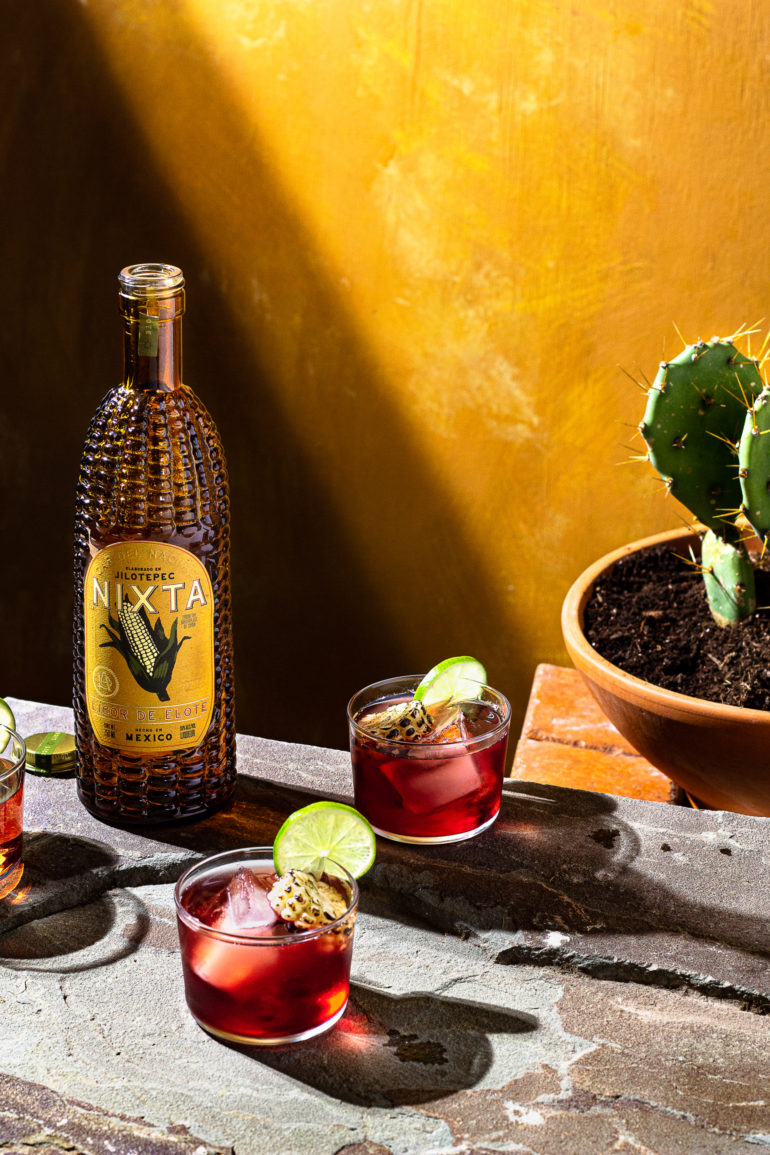Mention Cinco de Mayo, the annual holiday celebrated on May 5 in Mexico, and also increasingly in the U.S., and the first thing that may come to mind is tequila and margaritas. There’s a reason for that: In the mid-20th century, Mexican immigrants in the U.S. began celebrating Cinco de Mayo as a way to show pride in their heritage. Mexico’s spirits producers capitalized upon it and began promoting Cinco de Mayo, along with their products, to a broader audience until it grew into the holiday we know it as today.
But first, let’s back up: Many people in United States don’t know the history behind this celebratory day. It all goes back to 1862, when La Batalla de Puebla (the Battle of Puebla) between the French Republic and the Mexican Republic took place in the city of Puebla. It’s one of the proudest battles in Mexican history, and the outcome held historical significance for the United States, as well. In 1861, Mexico was coming out of its War of Reformation (also known as the Three Years War) between the Conservatives and the Liberals, which left the country deeply in debt. The president at that time, Benito Juarez (president of Mexico from 1858–1872 and the first indigenous Zapotec president), consequently decided to suspend all payment of foreign debt. His decision, of course, upset the governments of France, Spain and England, as they held a large share of Mexico’s debt. The three governments in turn formed the Convention of London, which traveled to Mexico to secure payment in full. The alliance arrived at the Port of Veracruz in 1862, and shortly there-after reached a deal with the Mexican government, after which the Spanish and English quickly left upon learning that their French allies intended to stay and invade Mexico. Napoleon III (nephew of Napoleon Bonaparte) had amassed an army in Mexico, which he then directed to attack the city of Puebla. After Puebla, the French army planned to make their way to Mexico City and realize the conquest of Mexico.
The French army, however, underestimated the small and ill-equipped Mexican army. The Battle of Puebla on May 5, 1862, lasted only one day. By dusk, the French army had lost about 1,000 of their troops and was beating a hasty retreat. While it took Mexico five more years to completely drive the French out of their country, their victory at the Battle of Puebla came to symbolize the Mexican people’s resistance to foreign domination — celebrated every year on Cinco de Mayo, especially in Puebla. But what many in the United States don’t know is that when the French attacked Mexico back in 1862, they actually had two goals: to takeover Mexico and curb U.S. power in North America, which was in the midst of the Civil War at the time. So, people in the U.S. also have their own historical reason to celebrate Mexico’s victory over the French on the Cinco de Mayo. Ready to raise a glass and toast this historic victory? Here are four creative cocktail recipes starring two of Mexico’s most ubiquitous spirits — tequila and mezcal.
Tequila and Mezcal, What’s the Difference?
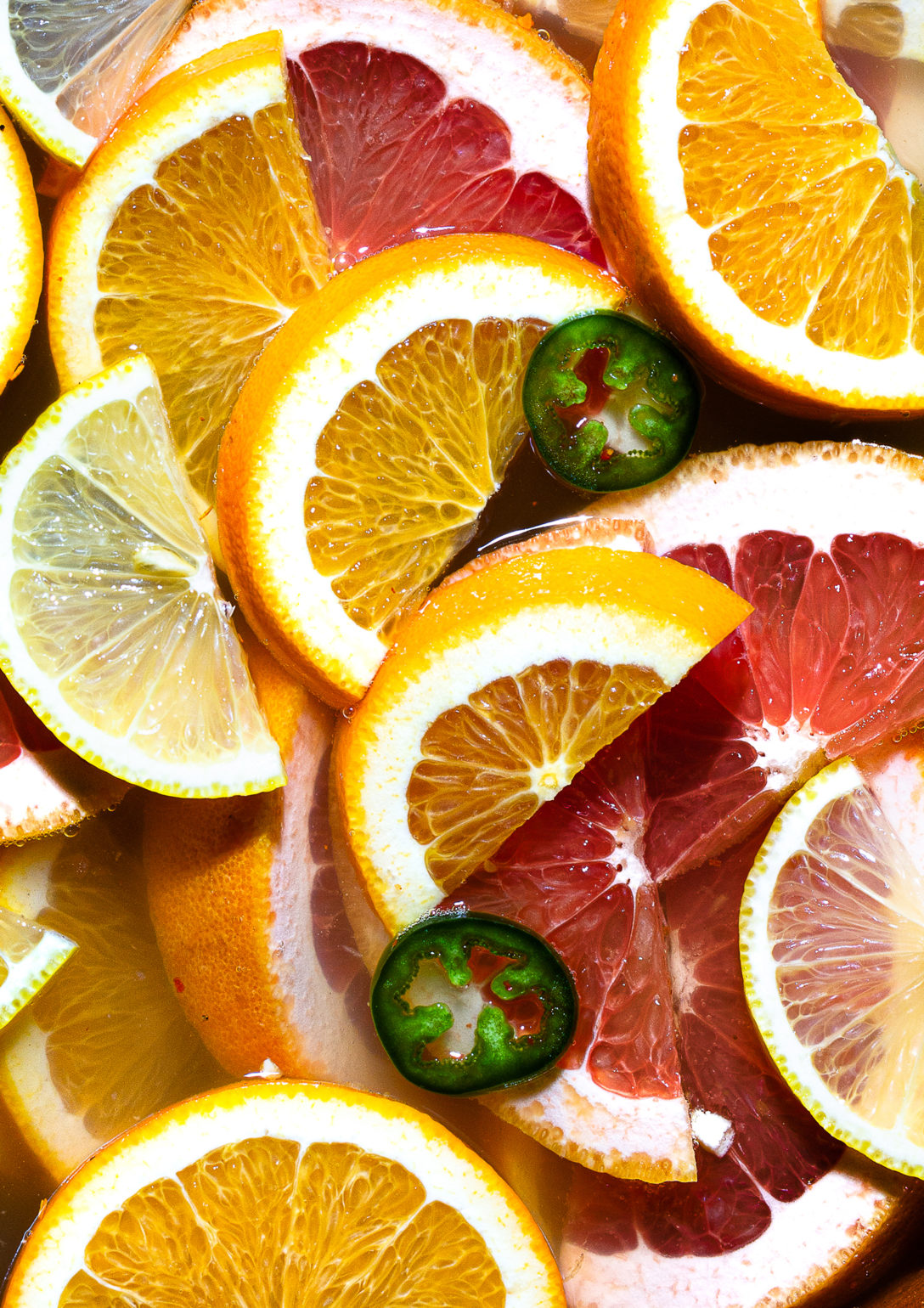
They say all tequilas are mezcals, but not all mezcals are tequilas! There are around 200 different types of agave plants in Mexico, but only a few varieties can be made into mezcal, and only one type can be made into tequila.
Tequila, which comes from the indigenous Náhuatl word that means “the place from which it’s cut,” is a distilled spirit from Agave tequilana (common name Weber Blue Agave ). To be called tequila, the beverage must be entirely produced — grown, harvested, distilled, bottled and labeled — only in the Mexican states of Jalisco, Guanajuato, Michoacan, Nayarit or Tamaulipas.
Everything begins in the fields, from planting the agave and growing it from 5 to 7 years until mature, to harvesting it by hand and finally transferring it to the tequilera (tequila distillery). Each tequilera has their own way of making tequila, but all of them share some common steps. First, the piñas (the core of the agave) are cooked in an oven, after which all of their juices are extracted for fermentation, distilled (nor-mally twice, but this depends on each tequilera) and then aged in oak barrels. There are five classifications of tequila: silver ( blanco); young, or gold ( joven); aged (reposado); extra aged (reposado añejo) and ultra aged (ultra añejo).
The process for producing mezcal is similar to tequila, but there are a few distinct steps that give this magical spirit a different personality. The word “mezcal,” also from the Náhuatl language, means “the house of the moon.” There are between 20 and 30 varieties of agave plants that can be used to produce mezcal, depending upon the region and the type of mezcal.
Mezcal also has an appellation requirement: It must be produced only in the states of Oaxaca, Durango, Guerrero, San Luis Potosí, Puebla, Michoacan, Tamaulipas or Zacatecas. There are three categories of mezcal: artisanal mezcal, ances-tral mezcal and mezcal. To make mezcal, the piñas are roasted in an earthen pit filled with wood, charcoal and rocks — this is the process that adds the smoky notes Mezcal is known for. Then, the roasted piñas are crushed to extract all of their sweet juice. The juice is then transferred to open wood barrels or other types of vessels, and left in the open air to allow ambient yeast to develop and provide the catalyst for fermentation. This process can last any where from three days to a week, depending on the region and the weather. After all of the complex flavors and notes are developed, this unique spirit is bottled.
Smoky Oaxaca Sunrise
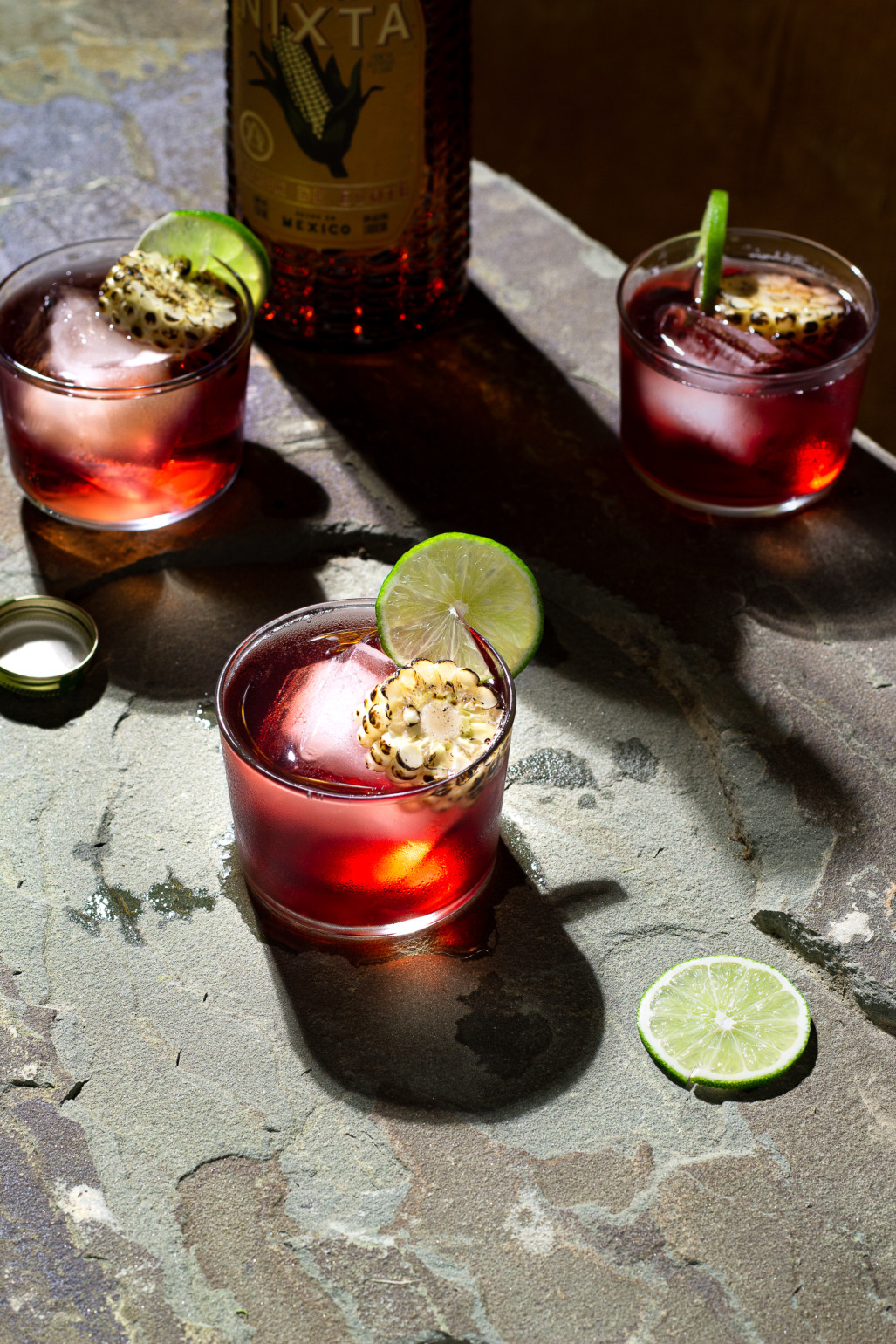
Serves 3
Infusing this smoky, mezcal-based cocktail with subtle flavors of roasted, caramelized corn, Nixta Licor de Elote is a corn liqueur made from maize grown in the foot-hills of the Nevado de Toluca volcano in Mexico using a 4,000-year-old cooking technique.
- 3 ounces mezcal
- 1½ ounces Nixta Licor de Elote*
- 3 ounces amaro
- Juice of ½ Meyer lemon
- Fill a cocktail shaker halfway with ice and add the mezcal, Nixta, amaro and lime juice; shake until well chilled.
- Strain into old fashioned glasses filled with ice. Garnish each glass with a piece of roasted corn and a slice of lime on the rim.
Nixta Licor de Elote can be purchased at Tahona Mercado, 1168 Leavenworth St, San Francisco.
Paloma Mezcal With Chinicuil Salt
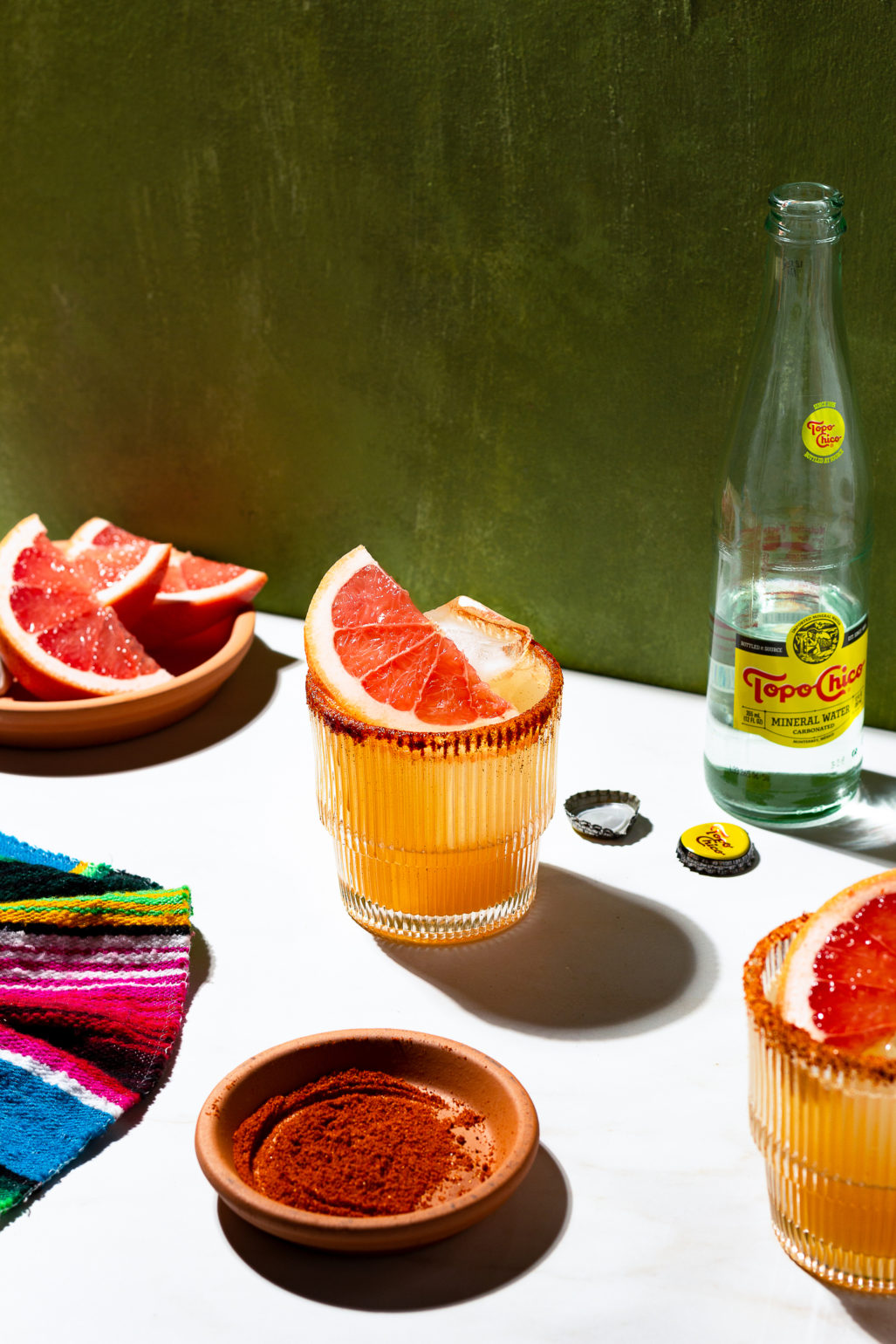
Serves 2
The umami-flavored chinicuil salt, or “worm salt,” used to rim the glasses in this cocktail recipe is made from the toasted, ground-up moth larvae that inhabit the agave plants used to make mezcal, combined with chilies and rock salt. Commonly served sprinkled on a slice of orange alongside a glass of mezcal at bars throughout Mexico City, chinicuil salt is gaining a cult following with foodies stateside as well.
- 3 ounces mezcal
- 3 ounces grapefruit juice
- 2 ounces simple syrupS
- plash of sparkling water
- Wedge of lime
- Chinicuil salt
- Run a wedge of lime around the rims of margarita or old fashioned glasses, then dip the rims into a plate filled with chinicuil salt.*
- In a cocktail shaker with ice, add the mezcal, grapefruit juice, simple syrup and a splash of sparkling water and shake until well chilled.
- Strain into the glasses and serve.
* Chinicuil salt can be purchased at many gourmet grocery stores in the Bay Area, including Tahona Mercado and Village Market at the San Francisco Ferry Building, or online at donbugito.com
Cazuela
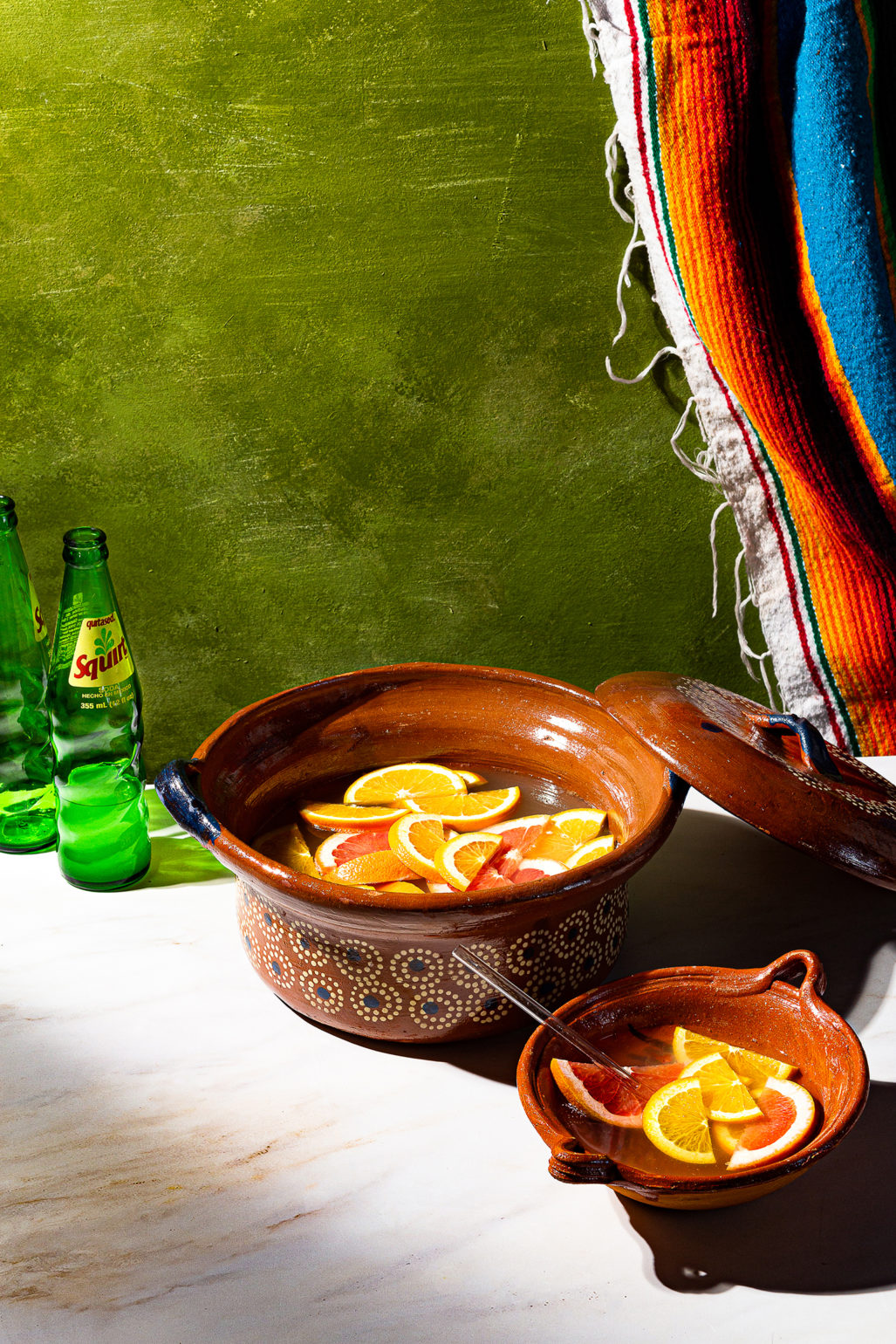
Serves 6
- 4 cups tequila
- 3 12-ounce bottles of Squirt (not diet)
- 1/2 cup lime juice
- 1/2 cup orange juice
- 2 oranges
- 1 grapefruit
- 1 lime
- 1/2 jalapeño
- Pinch of salt
This batch cocktail hails from Tlaquepaque, a little town nearGuadalajara, and is a well-known drink in the region (and the tequila state of Jalisco). It’s customary to serve it in a large clay bowl, but a punch bowl works just as well. Cut the grapefruit, oranges, lime and jalapeño into slices and set aside.Pour all the liquid ingredients and plenty of ice into the clay bowl (or punchbowl) and mix well.Add the fruit and jalapeño slices, mix again and serve
Spicy Sparkling Margarita

Serves 3
Providing a spicy twist on the classic Mexican cocktail, this margarita derives its heat from the addition of a simple syrup made with jalapeño.
- 3 ounces tequila
- 3 ounces spicy simple syrup*
- 3 ounces lime juice
- Splash of Topo Chico sparkling water
- Tajín chile seasoning
- Run a wedge of lime around the rims of margarita or old fashioned glasses, and then dip the rims into a plate filled with Tajín chile seasoning.
- In a shaker with ice, combine the tequila, spicy simple syrup, lime juice and the splash of Topo Chico; shake until well chilled.
- Strain the margaritas into the glasses, and garnish with lime wedges and jalapeño slices.
* To make the spicy simple syrup, combine 1 cup of sugar, 1 whole jalapeño cut into slices (including the seeds) and 1 cup of water in a medium saucepan. Cook until the sugar is dissolved. Refrigerate or set aside until it reaches room temperature before use.
More from Marin:
- Where to Eat: Fairfax
- 4 Eco-Friendly Wineries Paving the Way for Sustainable Wine in Wine Country
- Dining for Justice: A New Bay Area Food-Justice Program Ensuring No One Goes Hungry

Lorena Masso is a Mexican food photographer and stylist based in San Rafael. Born and raised in Guadalajara, Jalisco, Mexico, Masso discovered her passion for food that led her to study culinary arts in Buenos Aires, Argentina, and later to discover food photography.

